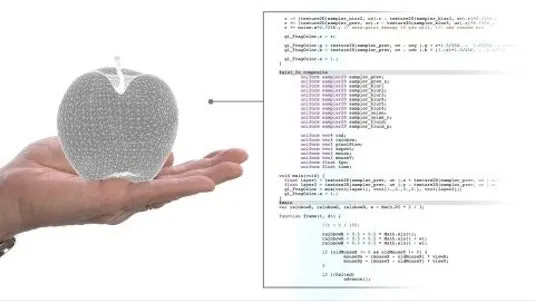
How to Scale 3D Printed Armor! 
This course provides an overview of how to scale 3D printed armor. It covers five methods, including trial and error, measuring tools, test rings, ArmorSmith, and 3D scanning. It explains the basics of scaling and provides tips and tricks for achieving the desired results. With this course, users can learn how to scale 3D printed armor with confidence. ▼
ADVERTISEMENT
Course Feature
![]() Cost:
Cost:
Free
![]() Provider:
Provider:
Youtube
![]() Certificate:
Certificate:
Paid Certification
![]() Language:
Language:
English
![]() Start Date:
Start Date:
On-Demand
Course Overview
❗The content presented here is sourced directly from Youtube platform. For comprehensive course details, including enrollment information, simply click on the 'Go to class' link on our website.
Updated in [February 21st, 2023]
Unlock the Exciting World of Learning! Here's What Awaits You: Learn how to scale 3D printed armor with this online course! You'll explore five methods of scaling armor, from trial and error to measuring tools, test rings, ArmorSmith, and 3D scanning. You'll gain an understanding of the basics of scaling and how to use the various tools available to you. You'll also learn how to use 3D scanning to create accurate and detailed armor pieces. With this course, you'll be able to create armor pieces that fit perfectly and look amazing!
[Applications]
The application of this course can be seen in the scaling of 3D printed armor. After completing this course, users can use the five methods discussed to scale their 3D printed armor. These methods include trial and error, measuring tools, test rings, ArmorSmith, and 3D scanning. Each of these methods can be used to accurately scale 3D printed armor to the desired size. Additionally, users can use the knowledge gained from this course to troubleshoot any issues that may arise during the scaling process.
[Career Paths]
1. 3D Printing Technician: 3D printing technicians are responsible for operating and maintaining 3D printers, as well as troubleshooting any issues that may arise. They must be knowledgeable in the various types of 3D printing technologies, materials, and software. The demand for 3D printing technicians is expected to grow as the technology becomes more widely used in various industries.
2. 3D Modeler: 3D modelers create 3D models for use in various applications, such as video games, movies, and product design. They must be knowledgeable in 3D modeling software and techniques, as well as have a good eye for detail. The demand for 3D modelers is expected to grow as the technology becomes more widely used in various industries.
3. 3D Scanning Technician: 3D scanning technicians are responsible for operating and maintaining 3D scanners, as well as troubleshooting any issues that may arise. They must be knowledgeable in the various types of 3D scanning technologies, materials, and software. The demand for 3D scanning technicians is expected to grow as the technology becomes more widely used in various industries.
4. 3D Printing Engineer: 3D printing engineers are responsible for designing and developing 3D printing systems and processes. They must be knowledgeable in 3D printing technologies, materials, and software. The demand for 3D printing engineers is expected to grow as the technology becomes more widely used in various industries.
[Education Paths]
1. Mechanical Engineering: Mechanical engineering is a field of engineering that focuses on the design, development, and production of mechanical systems. This field is rapidly growing due to the increasing demand for more efficient and cost-effective solutions to complex problems. Mechanical engineers are in high demand in the 3D printing industry, as they are able to develop and optimize 3D printing processes and materials.
2. Computer Science: Computer science is a field of study that focuses on the design, development, and implementation of computer systems. This field is essential for the development of 3D printing technology, as it is used to create the software and algorithms that are used to control the 3D printing process. Computer scientists are also in high demand in the 3D printing industry, as they are able to develop and optimize 3D printing processes and materials.
3. Materials Science: Materials science is a field of study that focuses on the design, development, and production of materials. This field is essential for the development of 3D printing technology, as it is used to create the materials that are used in the 3D printing process. Materials scientists are in high demand in the 3D printing industry, as they are able to develop and optimize 3D printing processes and materials.
4. Industrial Design: Industrial design is a field of study that focuses on the design, development, and production of products. This field is essential for the development of 3D printing technology, as it is used to create the products that are used in the 3D printing process. Industrial designers are in high demand in the 3D printing industry, as they are able to develop and optimize 3D printing processes and materials.
Course Provider

Provider Youtube's Stats at AZClass
Discussion and Reviews
0.0 (Based on 0 reviews)
Explore Similar Online Courses

Instagram Business Mastery 2019 - Expert Strategies

PenPot Tutorial - The Open Source UI&UX Design App

Python for Informatics: Exploring Information

Social Network Analysis

Introduction to Systematic Review and Meta-Analysis

The Analytics Edge

DCO042 - Python For Informatics

Causal Diagrams: Draw Your Assumptions Before Your Conclusions

Whole genome sequencing of bacterial genomes - tools and applications

Interactive 3D Graphics

Bioprinting: 3D Printing Body Parts


Start your review of How to Scale 3D Printed Armor!